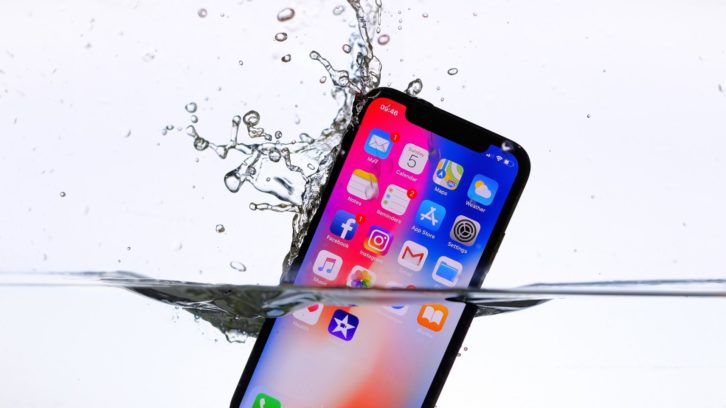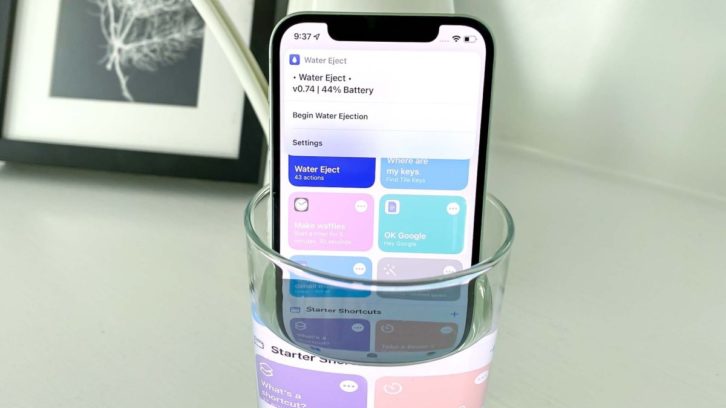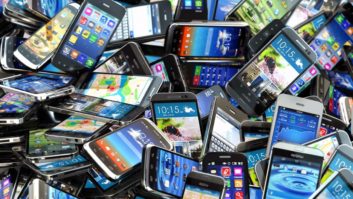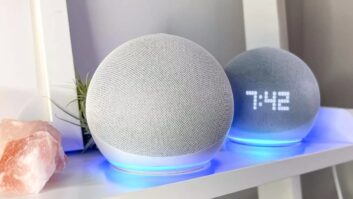
Smartphones have benefitted from a lot of advances in the last decade, from fast-refreshing screens that display apps and videos in crisp detail to powerful silicon that allow us to carry versatile mini-computers right in our pocket. But I would argue that the greatest advance for mobile phones is something a bit more basic, but something that’s enabled us to enjoy our devices for a longer period of time.
Yes, the best thing that’s happened to smartphones is the water resistance that keeps your handset from giving up the ghost the moment it comes in contact with any sort of liquid.
I experienced this firsthand the other weekend when I found myself making an unexpected journey straight to the bottom of a river, with my iPhone 12 along for the ride. We both survived our splash landing — the iPhone emerged with more of its dignity intact — and the phone’s IP68 water resistance rating deserves the full credit.
Water resistance is probably not high on the list of what you’re looking for when you shop for a smartphone. Oh, you probably check to see that it’s there, but I’m willing to bet you probably care a lot more about camera specs, display resolution, refresh rate, and how long your would-be phone is going to last on a charge.
And while all those features are certainly important, the ability to emerge unscathed from a body of water with your phone still functional is one of those things you’re really going to be glad your phone offers at the precise moment you need it.
Cry me a river — how my iPhone and I wound up all wet
Back to the circumstances in which I developed a previously untapped appreciation for a solid IP water resistance rating. My family and I were enjoying a weekend getaway in Northern California in which we rented a cabin alongside the Russian River. With that cabin came a canoe for our use. And with that canoe came an unexpectedly watery turn of events.

My wife and I have operated all types of watercraft without incident during our two decades-plus of traveling together, and we figured this canoe wasn’t about to end our unblemished streak of remaining above water. And for a while, things were going swimmingly, precisely because none of us were being forced to swim — instead, we paddled down the river at a surprisingly rapid clip.
At least, we were paddling successfully, right up until our canoe ran aground in a particularly shallow patch of water and we couldn’t manage to extricate ourselves by pushing off the rocks without paddles. No worries — one of us would just hop out of the canoe, push the boat back into a deeper part of the river and — in a graceful motion — hop back into the canoe to resume our trip.
That third part of the plan proved to be our undoing. My daughter — the nimblest person in the canoe — got out to do the pushing, but in her haste to get back in the boat, we started tipping sideways. Despite our best efforts to right the ship, gravity’s unbroken win streak continued, and the canoe flipped over, depositing all of us — me, wife, daughter — into the Russian River.
Actually, two other things were dumped in the river as well — my iPhone 12 and my wife’s iPhone XR.
We could dwell on how our subsequent attempt to get back in the canoe caused us to capsize again, dumping us and our assorted phones into the Russian River a second time. But your laughter at my expense would merely detract from the larger point — multiple dunks like that used to mean the end of your smartphone’s usefulness. So how did our iPhones survive?
IP68 to the rescue
My family may have worried that we would never be able to get into our canoe again without flipping it over, but we weren’t terribly concerned about the state of our iPhones. My iPhone 12 enjoys an iP68 rating and can withstand up to 6 meters of water for 30 minutes. My wife’s iPhone XR has an IP68 rating of its own, but a less rigorous one — it’s only good for up to 1 meter of submersion. The river was just over our waists, so that’s right on the edge.
Of course, IP ratings aren’t unique to the iPhone — nearly every major flagship boasts some kind of water resistance, with IP68 being one of the more common designations.
Certainly, our rankings of the best waterproof phones are filled with familiar names. The Galaxy S22, for example, also sports an IP68 rating, though that’s limited to 1.5 meters. The same goes for the Pixel 7. (An exception is the OnePlus 10 Pro, which claims water resistance but doesn’t carry an official IP rating except on models sold through carriers like T-Mobile. This is apparently a cost-saving move on the phone maker’s part.)
So yes, even after multiple spills in the Russian River, our phones continued to work, even the iPhone XR. We toweled them off as best we could once we got back in the boat (in which we remained upright this time), and dried them off more thoroughly back at the cabin.

My wife got a bit of a scare when she went to charge her iPhone XR and a message appeared on the screen warning her that water was detected in the Lightning port. Even this was no big deal, though — there’s a Siri shortcut for expelling water from your iPhone’s port, and we ran that right away. Then we waited for things to dry out further. A few hours later, the iPhone XR charged just fine.
What about cheaper phones?
All of this is fine if you’re getting a front-line flagship, where strong water resistance is part of the asking price. But that’s not the case on midrange models and cheaper. The Google Pixel 6a, the best cheap phone we’ve tested, sports an iP57 rating, meaning it can only be dunked in up to 1 meter of water. Even less expensive phones can only promise protection against water spray, not full immersion.
I hope that changes. We’ve seen other premium features work their way down product lines to become mainstays even among budget phones, and improved water resistance is one of the features that should be on that list.
Until that happens, though, make sure to check the water resistance rating of any phone you’re thinking of buying, even the cheap ones. A low-cost phone isn’t that great of a bargain if you wind up having to buy a new one the first time you come into contact with water.
This article originally appeared on Tomsguide.com.
About the Author
Philip Michaels is a Managing Editor at Tom’s Guide. He’s been covering personal technology since 1999 and was in the building when Steve Jobs showed off the iPhone for the first time. He’s been evaluating smartphones since the first iPhone debuted in 2007, and he’s been following phone carriers and smartphone plans since 2015. He has strong opinions about Apple, the Oakland Athletics, old movies and proper butchery techniques. Follow him at @PhilipMichaels.
See also: Your iPhone 14 Might Confuse A Rollercoaster Ride For A Car Crash













